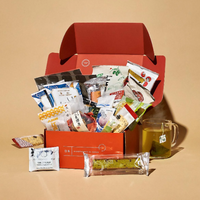The History of Japanese Kit Kats
The Original Kit Kats
Who doesn’t love the light, chocolatey, crispy perfection known as the Kit Kat candy bar? Three thin, delicate layers of wafer submerged in a coating of smooth chocolate. The satisfying snap when you break apart the sections and pretend to save a few for later, but never manage to have the willpower. When and where were these satisfying candy bars invented?
Kit Kats were first concocted in 1935 in England under the name Rowntree’s Chocolate Crisp. In 1937, its name was changed to Kit Kat Chocolate Crisp. By 1969, Kit Kat Wafer Bars were touted as a nice little treat to pack in a lunchbox. In 1970, production of U.S. Kit Kats was granted to The Hershey Company in Pennsylvania.
For the most part, Hershey has kept to classic flavors with the American Kit Kat: milk chocolate, dark chocolate, white chocolate, strawberry, and mint. Lately, the offerings have expanded to flavors such as Lemon Crisp, Raspberry Crème, and even Vegan.
But nothing compares to the twists on Kit Kats that Japan has come up with.
The Japanese Kit Kat
The Kit Kat found its way to Japan in 1973 when Nestlé took on production. In Japanese, Kit Kats are pronounced Kitto Katto. Because it sounds like the phrase kitto katsu, or “surely win,” Kit Kats have come to symbolize good luck and victory. Kit Kats are frequently given to test takers to wish them luck before their exams. They often come with notes of encouragement along the lines of Ganbatte! or “Best of luck!”
The Japanese also have a custom of giving people souvenirs from their trips. When travelers take a trip to a different region of Japan, they bring back local delicacies to their loved ones, including specialty Kit Kats like the Okinawan-inspired Sweet Potato Kit Kat.
Japanese snacks are known to come in certain traditional flavors, so it’s no shock that there are Japanese Kit Kat Flavors like Matcha Green Tea, launched in 2004. It is surprising, however, that more than three dozen new Japanese Kit Kat flavors have popped up in Japan since 2000, and now there are up to 300 versions to choose from! Forget mint and strawberry—we’re talking about an inconceivable range of unique flavor combinations and even savory options. 
Leave it to Japan to think of some of these palate-popping flavors: Wasabi, Cherry Blossom, Soy Sauce, Yogurt Sake, Dark Matcha, Summer Mango, Passion Fruit, Peach Parfait, Hot Chili Powder, Whole Grain Biscuit, Scotch Whisky, and Red Bean Soup.
How to Get Japanese Snacks
Japanese Kit Kats cannot be sold or shipped to customers in the US at this time. For US customers who are interested in trying other Japanese sweets and snacks, you can search on Bokksu Boutique for hundreds of mouth-watering and intriguing items that are available for purchase.
You can also sign up for Bokksu, an online Japanese snack subscription box. When you sign up for Bokksu, you get a Japanese snack box filled with goodies that shows up at your door every month. You can select from a curated selection, like this box of Japanese snacks, Japanese candies, and teas, highlighting traditional flavors. Treat yourself by trying delicious and interesting Japanese snacks that you have yet to experience, or order for a friend to bring them the gift of excitement and adventure!
By Megan Taylor Stephens
Author Bio












